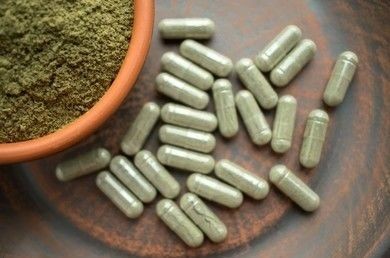Analysis of Endogenous Toxic Components and Content of Herbal Medicines
Inquiry
Endogenous toxic substances of medicinal herbs are substances with toxic effects formed during the biological metabolism of medicinal plants (or animals) during their growth and development, of which chemical components are the main type of substance. The chemical component group of endogenous toxic substances often has a biphasic effect, i.e., toxic and potent. The use of toxic herbs is widespread; therefore, the detection and analysis of endogenous toxic components is a prerequisite for ensuring the safety and efficacy of drugs.

Lifeasible offers a wide range of methods for the detection of toxic components in herbs, including capillary electrophoresis (CE), thin layer chromatography (TLC), gas chromatography (GC), and high-performance liquid chromatography (HPLC). We have also upgraded our analytical methods and now offer liquid chromatography, gas chromatography, immunological assays, and rapid assays for analyzing toxic components of herbs. Through our technical services, we provide you with a system of rapid methods and quality control standards for safely detecting toxicity in herbal medicines.
Endogenous toxic components in herbal medicines:
- Alkaloids
- Glycosides
- Toxic proteins
- Terpenoids
- Lactones
- Metallic elements
Detection methods (optional)
Conventional analytical methods
- Chromatographic methods. The main methods used to analyze endogenous toxic substances in herbal medicines are TLC, HPLC, GC, and CE.
- Spectroscopy. The main spectroscopic methods used to analyze endogenous toxic substances in herbal medicines include UV spectrophotometry, NIR diffuse reflectance spectroscopy, and Raman spectroscopy.
Immunoassay methods
The most commonly used immunoassays for analyzing endogenous toxicity of herbs are ELISA, GICA, and Western blotting. Our immunoassays offer the advantages of small sample size, simple operation, rapid detection, low cost, high throughput, and ease of fielding.
Other essays
In addition to the above methods, we have upgraded our technology to include genetic analysis, network toxicology prediction methods, Microtox, and chemiluminescence-based methods for rapidly detecting hazardous substances. These methods have the advantage of being fast and accurate. The Microtox technique and the network toxicology prediction method can simultaneously predict and evaluate toxic components.
Endogenous toxic substances are often an essential component of herbal medicines, and endogenous toxic components that are both potent and toxic exhibit a strong "dose-effect" relationship, i.e., the use of the right dose is the key to efficacy. In contrast, the wrong dose (usually an overdose) is prone to toxicity. Lifeasible's toxicity analysis and testing services can provide a reference for evaluating the efficacy and safety of herbs. Please feel free to contact us for project details and to develop a project plan to suit your needs.
For research or industrial raw materials, not for personal medical use!
Related Services

